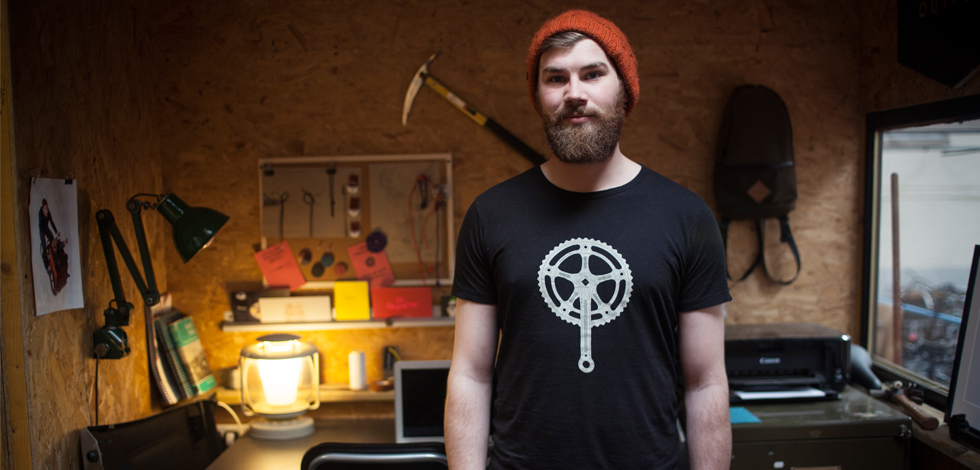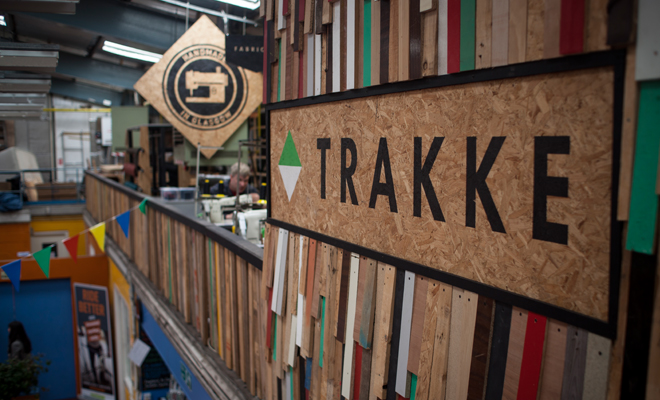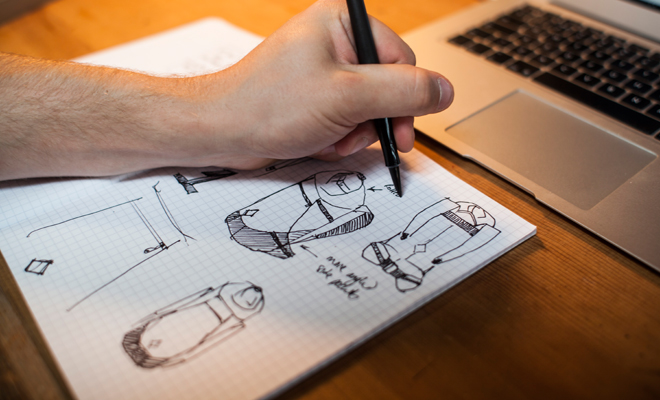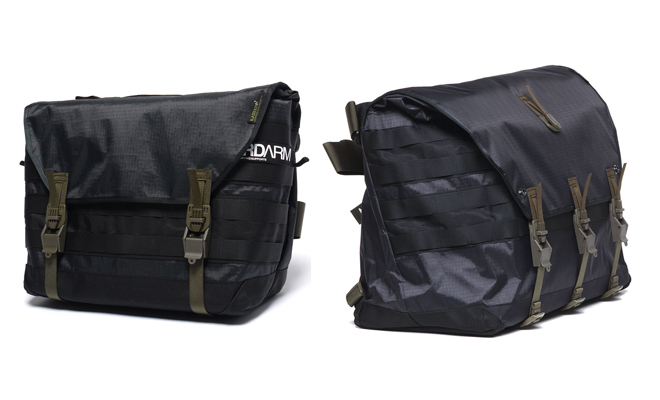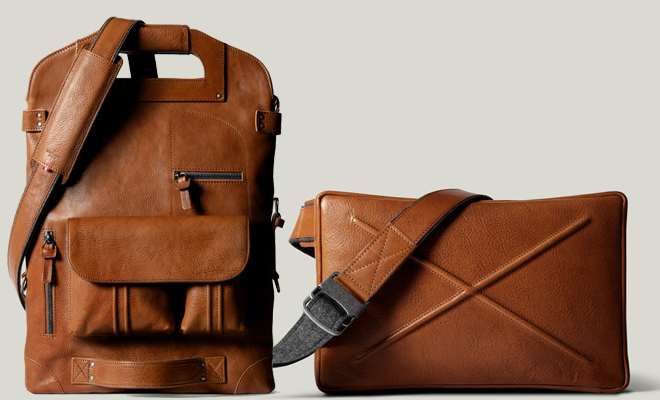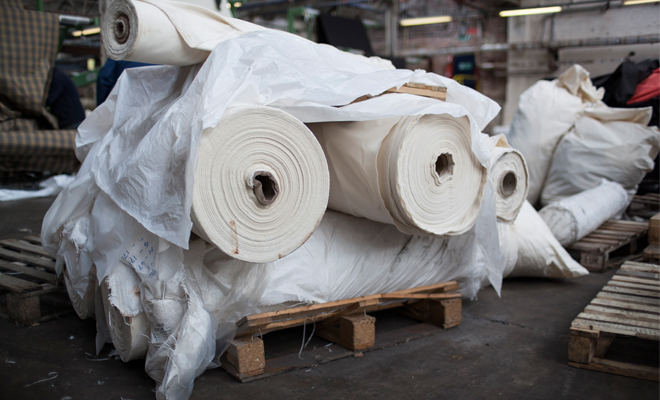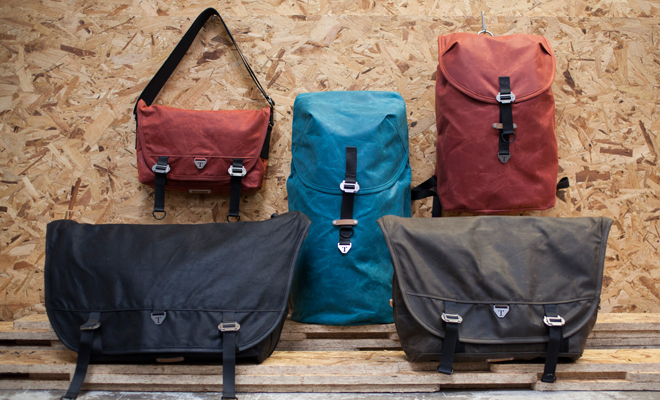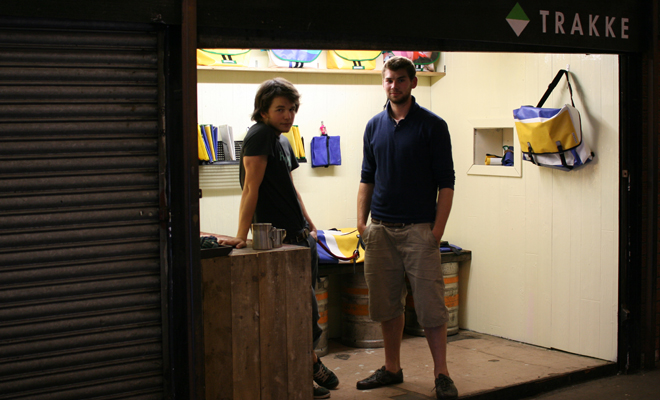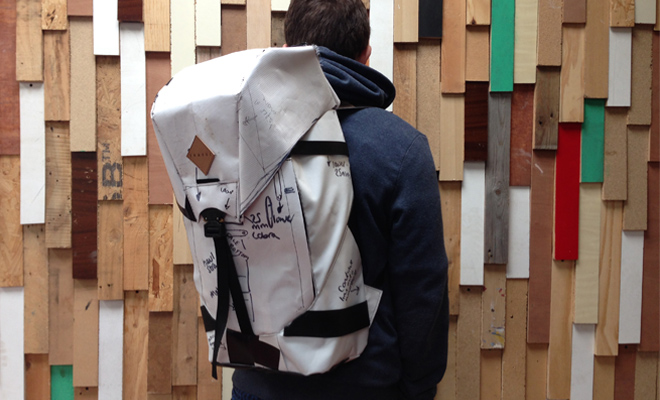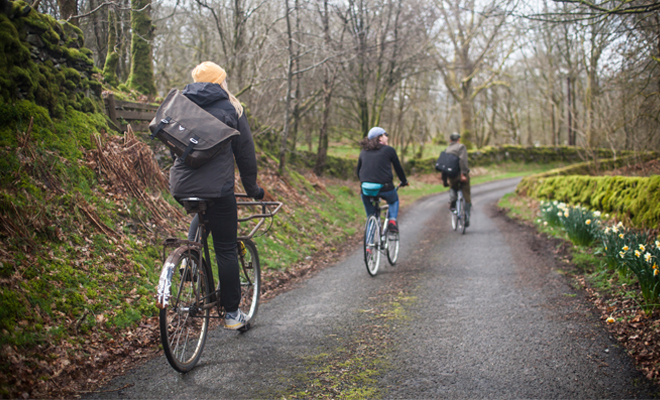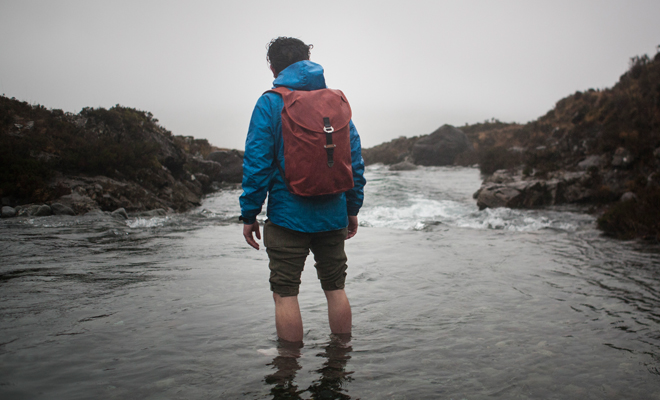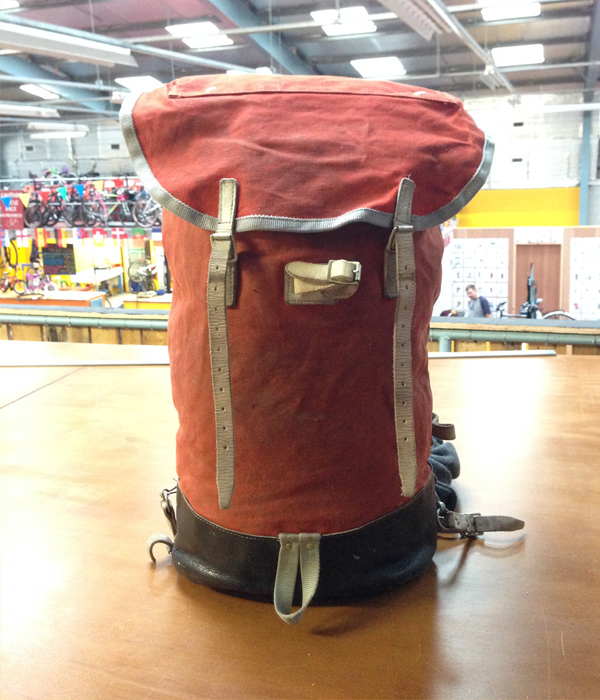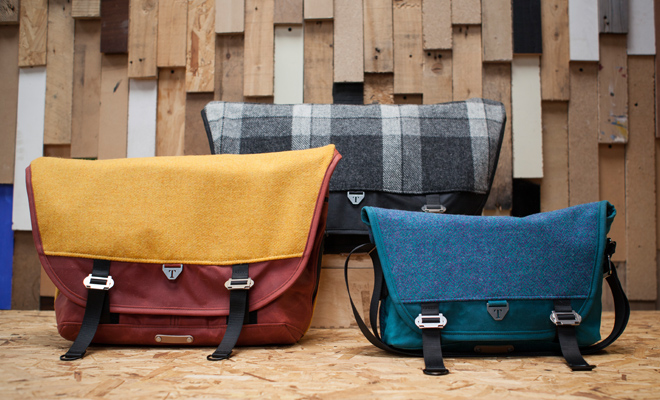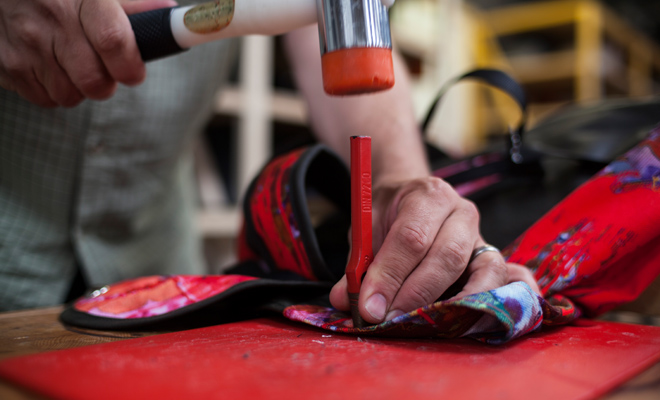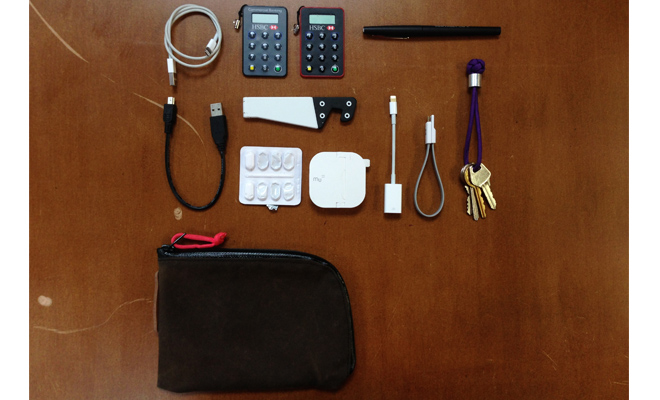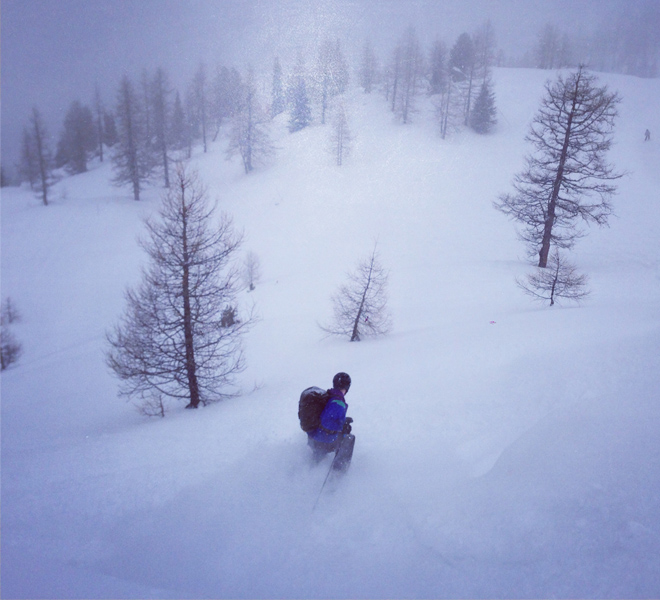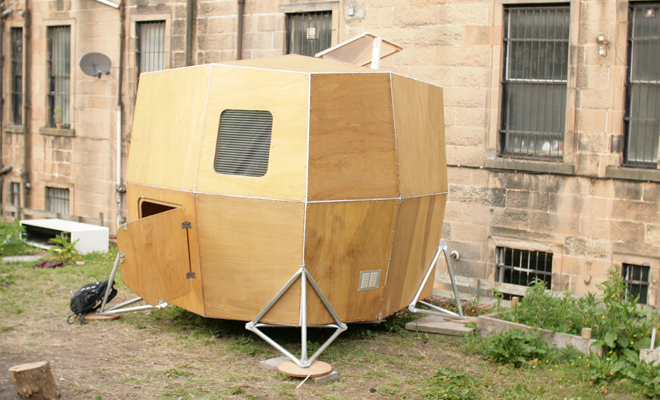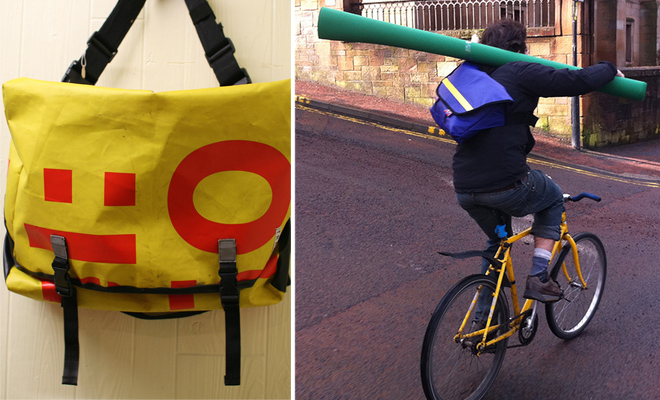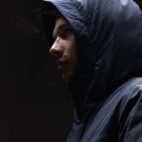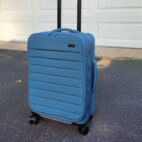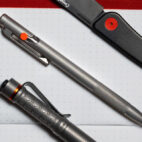Design Heads :: Alec Farmer (Trakke)
For the latest interview in our Design Heads series we reached out to Trakke founder, Alec Farmer. A man who built his brand from modest beginnings and moulded it into something truly special, taking home this year’s Carry Award for Best Active Messenger. So when the opportunity arose to get inside the head of the young Englishman, we jumped at it and quizzed him about his inspirations, design philosophies and learned more about the small Glasgow-based brand with the big future…
–
Are there any key insights that guide your stuff? What do you know that most others haven’t realized?
Simplicity is key. Simple products tend to be more versatile, durable and longer lasting. There’s less to go wrong. For us, that’s really important because we build stuff to last. We use the term ‘sustainability through longevity’ – the idea that we’re putting loads of energy into making this bag, bringing a new product into the world, and we want that bag to last for as long as possible.
What are your main channels for your creative inspiration?
I’m a bit of a magpie. I love a lot of different areas of design, and a range of styles, so inspiration can come from anywhere. I love the Japanese design sensibility, and often find that origami plays a huge part in how I visualise patterns when I’m designing bags.
Where is your most creative space and why?
My workshop is a pretty awesome space. We’ve got a ‘bothy’ style hut as an office – clad in shingles made from recycled wood. It’s a warm space, and we’ve got comfy chairs to sit on while we’re working on our laptops. None of this ‘desk’ nonsense.
Any unusual places or circumstances where you got an idea for a new innovation in carry?
I designed the side pockets on the Mule messenger bag because I needed a good place to stash a sausage roll without taking my bag off. Does that count?
Haha, maybe. Where else? Do you get a lot of ideas in the shower or the corner market foraging for organic dragon fruit?
I wish I knew. Normally, ideas just pop up out of nowhere – just the seed of an idea, but enough to start developing it. I tend to find my brain works in waves though. Sometimes, I’m thinking of new stuff all the time – too many ideas, all at once. Then nothing for a couple of months. It used to unnerve me – I work in a creative industry, so new ideas are important – but now I just ride it out. I don’t let it worry me, and before I know it, more ideas are popping up again.
Who do you look to in the bags world? Who does rad stuff?
I love ACRONYM. They have a really utilitarian aesthetic, but it really works. The detailing and patterning of the bags is just beautiful, and they use some cutting-edge components. So well considered.
Hard Graft make some of the most beautiful bags and accessories. They have carefully considered their palette of materials – just leather and felt – but they clearly have a deep understanding of the materials they are working with and they make some stunning kit.
I’ve got a complete weakness for vintage mountaineering kit too. A friend lent me a range of late 1960’s Karrimor backpacks, and they are stunning. Very basic, but incredibly comfortable and simple. At the time, they were really pioneering some new ideas in backpack design, so it’s amazing to see the original packs in the flesh!
Are there any trends or things folk do in carry that drive you nuts?
I hate it when brands claim to be innovating when really they are marketing… I think as a society we expect constant ‘innovation’ and to quench that thirst brands constantly try to come up with the next big thing. At the end of the day, a bag is a bag. A lot of ‘innovation’ today is just an old idea, given a new name. I kinda wish we lived back in the 70’s – in the golden era of outdoor design – when people were making real waves designing the first ever internal frame pack, or the first ever integrated waist belt. At Trakke, we just try and make beautiful packs that work. No frills. No marketing bullshit. Just the basics, done well.
What materials do you most like to work with? Are there any new materials you’re experimenting with? Anything that will break the time-space continuum?
We choose our materials carefully. I love waxed cotton because it has so much character – it wears in, not out. We’ve got an amazing collaboration with a print company called Timorous Beasties coming later this year where we’ve developed printed waxed cotton for our bags. I’d like to do more with stainless steel too. At the moment, most of our hardware is stainless steel, but I’d like to keep playing with it. I’d love to create a steel cordlock – you only seem to be able to buy plastic cordlocks at the moment and they aren’t the prettiest things.
.
You’ve got a pretty interesting story that ties in with materials and Trakke’s beginnings, can you tell us where you first sourced your materials?
When we started Trakke, we were students. Like most students we were completely broke, so we used to cycle around the city, late at night, and find materials out on the street. Abandoned leather sofas, old suitcases, outdated advertising banners. You name it. We used to harvest all the zips and buckles off old suitcases and prams, cut the fabric off old sofas and adverts and reuse it all – turning it into bags. It was pretty funny actually. We used to sell bags that had buckles with another brand’s logo stamped on it. It’s all we had! In fact, our original labels were just school nametapes we used to sew in. We’ve come a long way since then!
Do you have to go to the maker to make a good bag? Can carry design work remotely?
I’d probably argue that most carry design is done remotely. Not many brands manufacture their kit in-house any more. Obviously, it does work to an extent, but I think you get far more control and attention to detail if you make stuff in-house. We sell direct to our customers too, which is great because if they have an issue we’re the first to find out. We get first-hand feedback, which helps us to develop and improve our products more rapidly than those manufacturing overseas.
How do you test your product? What do you look for when testing? How many prototypes do you go through before release?
Normally, I’ll have an idea in my head for a while before I put anything on paper. Then I’ll start sketching the basic functionality and aesthetic, and make a few quick and dirty prototypes just to get a feel for the shape and size. These prototypes are normally made from recycled tarpaulin, just like the ‘old days’. I use it because it’s easy to cut, sew, take apart and sew again. I’ll make notes on the prototype itself, refining details and marking changes right onto the fabric.
As it develops, I normally try and make one complete prototype myself, so I know exactly how it goes together. Then I’ll hand it over to my team – the people who really know how to sew – and they’ll make a version themselves. At this point, they’ll tweak certain aspects to make it easier for them to produce, or to make seams stronger or whatever. Then I’ll take that prototype, and just use it for a few months.
Sometimes I’ll get friends to take them out and see what they think, or if it’s a bag that is sport-specific, I’ll find someone who knows their stuff and work with them to refine the design further. The key is finding someone who isn’t precious about their kit. Prototypes need a strict diet of abuse to test their durability.
What products are you most proud of?
Well, a lot of people have fallen in love with our Wee Lug Messenger bag, so I’m really pleased with that, but my personal favourites are the Krukke and Arkaig backpacks. I spent a lot of time refining the details on those, and I love how clean they are.
Someone once called the Krukke the ‘Whillans Alpiniste’ of the 21st century. The Whillans pack is my favourite bag of all time, so that is a big compliment!
What’s new with Trakke?
Pretty much everything at the moment. As you know, we’ve just launched our new website, along with new branding, new bags, new detailing, new features and even some new accessories. For us, it’s a real step forward. We’re showing what we’re made of! It’s all very fresh right now – I’m still getting used to seeing the new logo!
Do you have any burning goals or desires for your career? Are there things you really want to achieve?
I think my biggest goal is to promote local manufacturing – I’d like to inspire others to bring their manufacturing back to the UK. At the same time, I’m acutely aware that a lot of the skills that are needed for this kind of work are dying out here in the UK. I’m only 25, and I have a young team here, so I’d like to try and encourage more young people to get interested in manufacturing again. We want to be around for a while, and of course we will continue to grow, so we need to do something to generate interest as we generate jobs – whether that’s an internship scheme or something more widespread, I don’t know.
Do you have any favourite tips or habits for carrying better, either EDC or when travelling?
Well, I found a great hack for rolling up t-shirts the other day! I sent it over to you guys! Such a neat technique! As well as that, I’m a big fan of the Mu charger. The UK plug standard is so annoying, because they aren’t very compact and always seem to jab into other stuff in your bag. The Mu solves that really elegantly. I carry a fair bit of technology with me on a daily basis, so buying short charging cables is handy as gadgets always seem to come with metres of cables which can get messy. Short cables stay nice and neat. Also, I don’t know if other people do this too, but when I carry a waterproof jacket with a hood, I always roll it up into the hood, which keeps it compact, neat and secure. Oh, and packing cubes. Buy packing cubes, and use them. They rock.
.
You’ve been in the game for a bit of time now. What’s the most important thing you’ve learned about design and secondly about the carry industry?
Wow. I’ve definitely learnt a lot over the last few years. I came into this industry as a complete outsider – I had no idea what I was doing! I’ve been learning as I go, absorbing knowledge like a sponge. In design terms, I’ve really had to get to grips with designing for production. I know that sounds basic, but a lot of people don’t consider how it will actually be made. Because all of our bags are made in-house, I need to consider every detail to make sure we are able to produce it easily and relatively quickly, to a high standard.
.
In terms of the carry industry, I’ve been amazed. Everyone seems to be incredibly welcoming. Personally, I don’t like the notion of ‘competition’. There are loads of companies out there, doing awesome things, and at the end of the day, we’re all in it together. It’s great to find that other folk feel the same way, and are happy to give advice and exchange ideas! When I started out, I kind of ‘idolised’ my favourite companies. You paint a mental picture of them that makes them seem a bit exclusive, but then you realise they are just a bunch of geeky bag guys with the same interests as you!
What carry product (of your own creation, or anyone else’s if you feel like being generous) do you enjoy the most? What makes it enjoyable?
I recently bought an old steamer trunk wardrobe. I’ve been wanting one for ages. It’s basically a massive trunk, that opens out and has drawers on one side and a clothes rail on the other. They were used by the rich and famous when they were cruising around the world on steamboats. This one dates from 1903, and it’s beautiful. I love the idea that you can just close it up, carry it out and hit the road. It feels nomadic.
Can we see a pocket dump?
What bags do you run with daily?
At the moment, I’m using our Arkaig daypack. I must say, I really like it. I tend to change packs pretty often so I get a good feel for all of our packs. At some point or other, they have all been my ‘go-to’ bag. The only downside is that I always end up with the original prototype. In a way, that’s cool. It’s the first ever! But normally there’s something that has gone wrong on it, so none of my own bags are perfect!
What kinds of hobbies do you pursue when you aren’t creating wonderful new carry products?
In the winter, I try to get out skiing when I can. In the summer, I’m always in the park beside our workshop on a slackline. It’s such an amazing sport – it seems so simple, but it requires a lot of focus – and it’s so addictive! I’ve met some great people through slacklining – in fact, we made a film with some of them recently! Also, I was talking about nomadism earlier – I’ve got a bit of an obsession with it. I read up on that quite a lot…
.
Have you created any carry craft specifically for that hobby, or do you intend to in the future?
When I started Trakke, I was living in an 8’ x 8’ microhouse that I had built to test out some ideas about living nomadically in the city. It was great fun, but in Glasgow it rains a lot and the microhouse wasn’t too watertight! The project was based on the work of one of my favourite designers – Ken Isaacs. He was building amazing ‘living structures’ in the 70’s and I was trying to get to grips with his ideas on a first-hand basis! The whole process of scaling down your life to fit into a small space is really interesting. It’s a bit like designing a bag – everything gets compartmentalised and refined until you are left with only the bare essentials of what you actually need. When I lived in the microhouse, everything I owned fitted in two plastic crates I had found on the street!
Are there any materials you used to like, but now find impractical for your creations?
Well the reason we stopped using recycled advertising banners is that all the print companies started using cheaper vinyl. We would try and make bags with it, and it would fall apart in the sewing machine! It was a shame because we used to find lovely, thick tarpaulins that were really nice to work with. Perhaps one day I’ll go back to using it. Because it is synthetic, it opens up a lot of possibilities, like laser-cutting or ultrasonic welding.
What wouldn’t the layperson know is essential to a good carry product? We all tend to appreciate convenient pockets, for example, but is there anything that we wouldn’t notice about an excellent carry product off-hand but a master of carryology always would?
I can’t stand uncomfortable straps. You’d think it was obvious, but you see so many packs out there with poorly designed straps. Also, I really don’t understand the point of a waterproof backpack cover. It seems like a superfluous bit of design – why not just make the pack itself water-resistant? That really bugs me – packs are designed to protect and organise their content, but so many packs aren’t even vaguely water-resistant!
If you weren’t making carry products, what would you likely be doing for a profession? Or do you have another passion that your carry creations help you enjoy more fully?
I think I’d be pursuing the microhouse concept more. I love that small-scale architecture. A bit too big to be ‘product design’ but a bit too small to be considered traditional architecture. It has a lot of the appeal of bag-making – it’s all about organisation and spatial awareness. In fact *whispers* we’re actually working on a completely unique yurt design at the moment which may well end up on our website…more details coming soon!
What would you tell a younger version of yourself (say five years ago) taking into account the experience/wisdom that present-day you has acquired?
Never buy a sewing machine for less than £10. They have a tendency to catch fire.





 Carry Awards
Carry Awards Insights
Insights Liking
Liking Projects
Projects Interviews
Interviews
